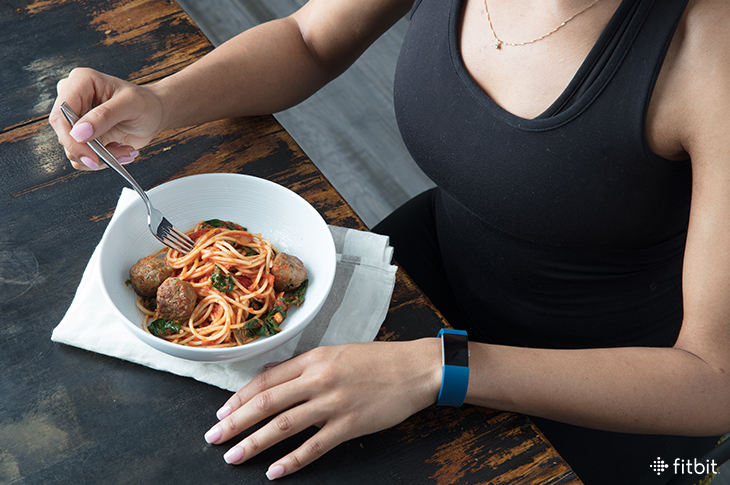
You have your year all planned out. You’ve picked your races and put them on the calendar. It’s probably broken down into different periods, when you’re seriously ramping up for big events and when your training is a little subdued in between. So your training strategy changes dramatically at different times of year—but what about your nutrition strategy? Too often, training and nutrition are out of whack, but if you’re not munching enough calories during peak season, your performance can suffer, and if you keep carbo-loading during the off-season, it can have waistline repercussions. The best advice? The latest science in sports nutrition suggests that you rethink your timing and eat like you train. Here’s how.
What Is Periodized Nutrition?
With periodized nutrition, you tweak your diet based on the ebbs and flows of your training, so you’re fueling for the work required. “Matching your food intake to the energy needs of your body makes sense,” explains Bob Seebohar, sports dietitian, exercise physiologist, and author of Nutrition Periodization for Athletes.
How to Eat During High Training
Let’s say you’re performing daily bouts of intense sweat sessions. Seebohar says your goal during this training cycle should be to eat enough of the macronutrients (i.e. carbohydrates, protein, and fat) to meet the extra fuel demands of your body. “With higher intensity training sessions and competitions, you may need more carbs to fuel your muscles with more energy,” says Seebohar. The specifics will vary from person to person based on training goals. But in general, you may need to increase your calories and adjust your macros to be more focused on carbs. Here’s what that could look like on your plate.
On-Season Meal Example
6 oz (185 g) grilled chicken breast
2 cups (12 oz/375 g) cooked quinoa
2 cups (2 oz/60 g) mixed greens + 2 tablespoons salad dressing
How to Eat During Low Training
During the off season, when you cut back on workouts, you should also drop your calorie intake, since you’re simply burning fewer calories overall. But you also want to balance your macros differently. “Consider getting a higher percentage of your calories from protein and fat, with less emphasis on carbs,” advises Seebohar. “Since you aren’t placing as much physical stress on your body, continuing to load up on carbs can lead to unwanted weight gain.” The easiest way to trim carbs? Simply eat more vegetables and fewer servings of grains and fruit. And if the adjustment leaves you ravenous, “Make sure to include protein and healthy fats, like extra-virgin olive oil and avocado, at almost every meal. Those will help to optimize your metabolism and keep hunger at bay.” Here’s how your macros and portions would shift.
Off-Season Meal Example
4 oz (125 g) grilled chicken breast*
1 cup (6 oz/185 g) cooked quinoa
2 cups (2 oz/60 g) mixed greens + 1 tablespoon salad dressing
*Cutting back on calories in the off season means serving yourself smaller portions, while keeping track of your macros balance.
What Does It Mean to “Train High, Sleep Low”?
Another strategy in periodized nutrition is the “sleep low method.” That’s when you do a bout of high-intensity exercise, limit carbs afterwards, and then the following day, perform a morning training session in a fasted state. Studies suggest that training when your glycogen stores are low, may improve your body’s ability to adapt and boost overall performance. However, Seebohar stresses that you tread with caution. “Since your muscles need carbs for hard workouts, this method only works when you’re training at a lower intensity.” So if you skip carbs for a few hours and lace up for a spirited workout (say anything above 75 percent VO2 Max), you’ll likely have trouble keeping up the pace. If you’re planning an easy workout, you could experiment with fewer carbs in your system to teach your muscles to adapt to training with less gas in the tank. But when you want to crank it up, eat plenty of carbs beforehand to keep your energy stores well stocked.
How to Try It
If you’re a distance runner, cyclist, or triathlete, you can think about nutrition periodization in terms of a macro-cycle, which could mean seasons of the year. But even if you’re more of a weekend warrior, you can call that a micro-cycle, and still make small changes day to day. Keep an eye on portions and ease up slightly on carbs during the workweek, when your workouts might be shorter. Then save the tall stack of pancakes for Saturday morning, when you’re getting ready to run up a mountain. Keep in mind that the best nutrition plan is customized for each athlete, based on your training and schedule. So it’s always a good idea to seek out the advice of a qualified sports dietitian, who can develop a meal plan to suit your specific training needs.
The post How to Match Your Carbs to Your Training appeared first on Fitbit Blog.
Source: Fitbit Blog
—